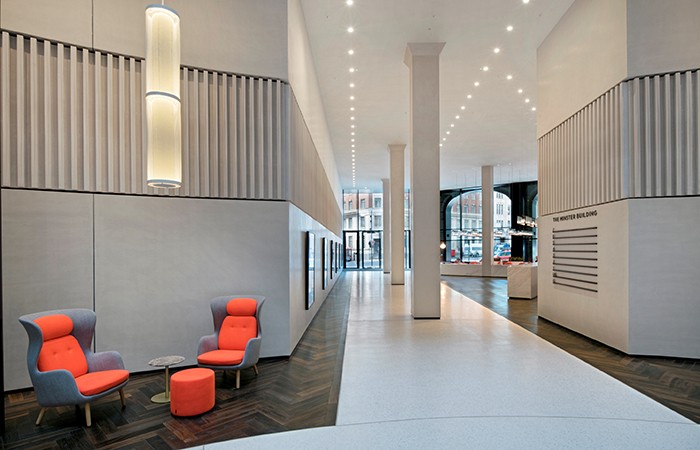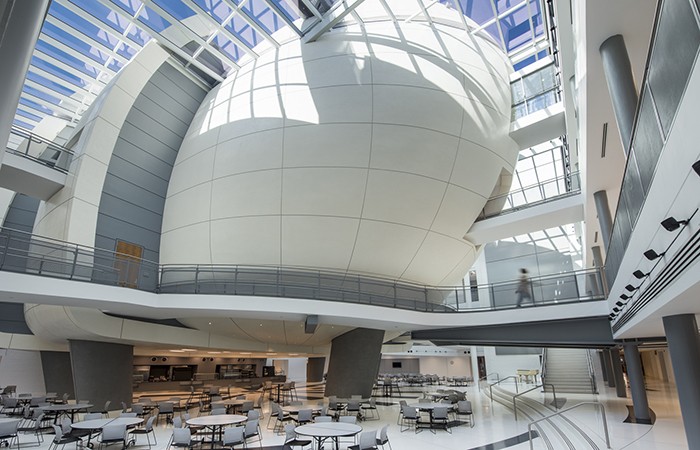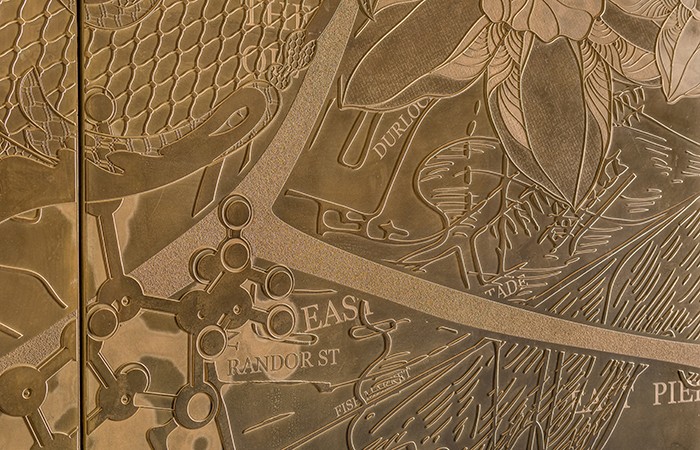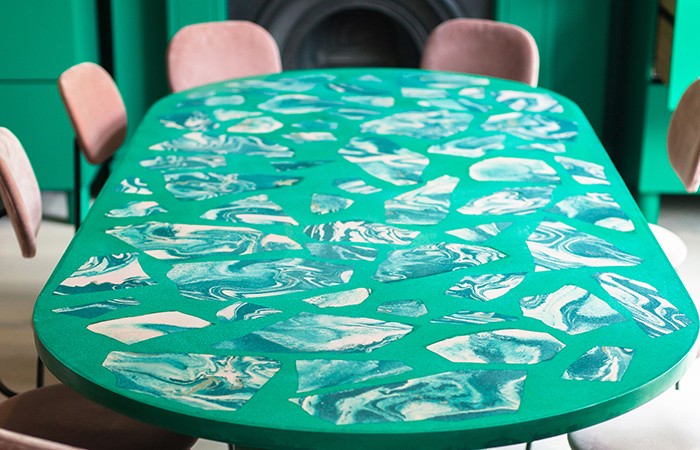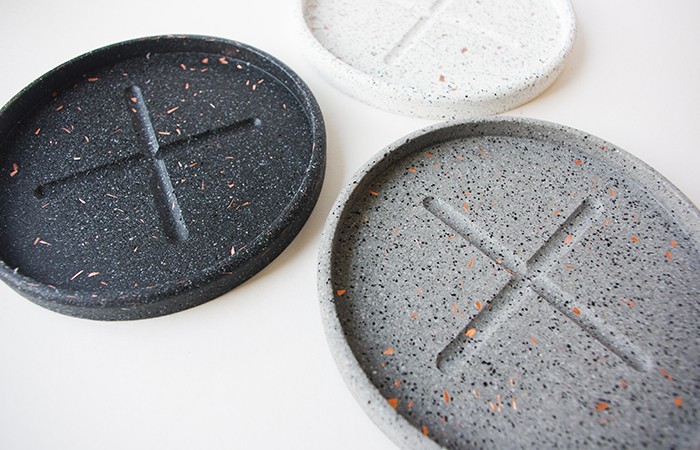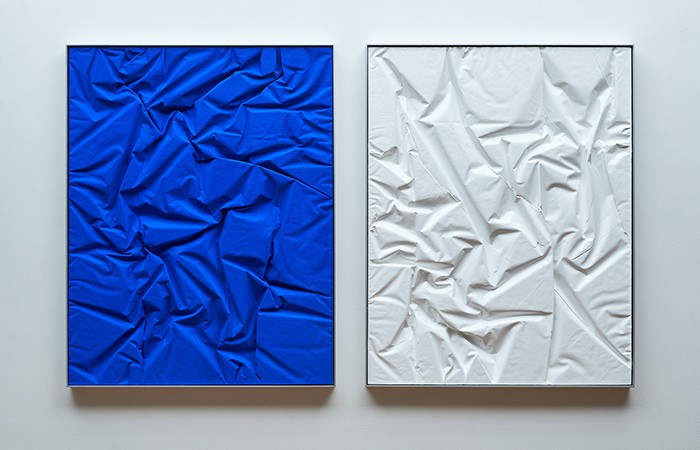Pouring Perfection
Our material of choice for this month has been water and whilst it’s influence upon design might not be obvious, it is in fact vital in the creation of a particular type of surface material that can be found in most interior environments around the world.
Mineral composites like plaster and Jesmonite will forever remain in their powdered mineral state without the introduction of water. Much like their composite cousin, concrete, plasters are transformed by a chemical reaction when mixed with the liquid. Firstly, the combined substances heat up and thicken and then as they cool they harden to form a solid material.
The development of plaster stems back to the Egyptians and later the Romans, who were seeking an alternative to thinly applying mud to their walls as a form protection. Cue clay, lime and gypsum powder; and of course, water. Whilst lacking in tensile strength, the discovery of such composite materials offered a durable and impact resistant solution, and one that wouldn’t end up cracking like mud. You don’t have to roll the clock too much further forward to see plaster being utilised in some of the finest and most decadent interiors. Notable surviving examples include the Sistine Chapel, with its enormous ceiling fresco with which Michelangelo used a plaster base to apply and fix his paint onto.
Plaster has served us well, protecting our broken bones and our infrastructure alike, as well as helping in the creation of our dentures. In our interior environments, ancient material combinations and application processes have been continually mastered and refined. Here in the UK one of the leading brands of plaster decoration is Armourcoat.
Specialising in trowel applied surface finishes consisting of cement, lime, marble powder and small stone aggregate, they actually started out as squash court specialists; such is the durability of the material.
Now a world leader in polished plaster, sculptural effects and innovation with plaster products the company has 30 years of experience in using the material, which is founded upon continuous research and development. The fruit of this labour can be seen on and in countless buildings across the globe, with the boundaries of surface finish expectations being stretched to new levels. Take the Darwin Centre adjoining the Natural History Museum here in the UK and Duke Ellington School of the Arts in Washington D.C. Both are freestanding structures that resemble an egg form, each spanning multiple floors whilst being contained within a large glass atrium.
They both fittingly pay tribute to their namesakes, with the use of truly innovative techniques; the Duke Ellington requiring some 25,000ft2 of expertly applied and hand-finished plaster in Armourcoat’s trademark Armuralia range; a silky smooth finish with subtle tonal variations. Inspired by the creativity and skill on the piano of its eponym, the space has black and white sections that evoke the keys of a piano, as well as the breathtaking curved forms that contain a theatre and walkways within.
Whilst Armourcoat continues to innovate with more conventional mineral mixes to form their plaster finishes many designer-makers have also turned their attention to another plaster-based material. Jesmonite is a relatively new composite material having been invented by company founder Peter Hawkins in 1984. Consisting of a gypsum or cement and acrylic resin mix, it has become a go-to material for designers looking for an alternative to environmentally questionable resin-based fiberglass and plastic. To add to this, it is also very easy to form and dries very rapidly, making it an efficient mouldable surface solution. Often referred to as a ‘chameleon material,’ Jesmonite can take the form of plaster as well as stone, wood and metal due to its ability to take to even the finest of mould detail as well as the ease at which it can be pigmented. Its applications are countless, with the worlds of art, design and even film all utilising the material to create detailed wall surfaces, intricate objects and sculptural forms.
As one of our previous interviewees designer Olivia Aspinall explains, the ability to colour Jesmonite is one of its distinguishing and most useful properties:
“My favourite property of the material is the way that it holds colour. As a studio we are very colour focused and will spend a lot of time experimenting with and perfecting colour for or projects. Jesmonite allows us to be very specific with colour, accurately matching colours for our clients bespoke projects. In our recent collaboration with 2LG studio we used the AC730 cement based range and manipulated it using various techniques and colour combinations that we hope shows concrete composites in an elevated light.”
For other young designers it’s the ease with which Jesmonite can be mixed and cast that initially made it so approachable to experiment with that allows for continued innovation and makes the design process exciting. Adele Woodward, founder of AdeleWDesign, who could be spotted at One Year In at this year’s New Designers, began using Jesmonite in 2017 during her studies at university. Her homeware range is testament to this, as she explains:
“I fell in love with Jesmonite because it can be easily manipulated – whether it be creating rich colours with pigments, embedding other materials within it or etching and sanding to produce the desire surface. It has so many ideal characteristics, which are perfect for so many disciplines within design industry.”
For others, such as artist Florence Sweeney, who creates beguiling solid surfaces that look like frozen moments of crumpling fabric, Jesmonite offers the perfect alterative to more hazardous materials such as concrete, which can be tricky to work with. As she explains, it’s not just the ability to mould and colour the material that makes it so perfect for her work:
“Prior to discovering Jesmonite I was using materials such as concrete and plaster of Paris. Both materials can be a nuisance as they’re irritants to the skin and are not really as durable. Jesmonite being a water based product its far cleaner and environmentally friendly to have in the studio and less chance of burning my hands! I was using concrete with wire and fibreglass which just isn’t as strong as the Jesmonite and quad axial glass mesh which have allowed me to use less material and create more definition.”
Water has proven to be the catalyst for a number of our finest composite creations and plaster, and even more recently, Jesmonite have established themselves as leading materials in the worlds of art and design. We may not be painting religious iconography upon vast plaster ceilings all that often anymore, but you’ll find some form of plaster in almost every building you ever visit.





